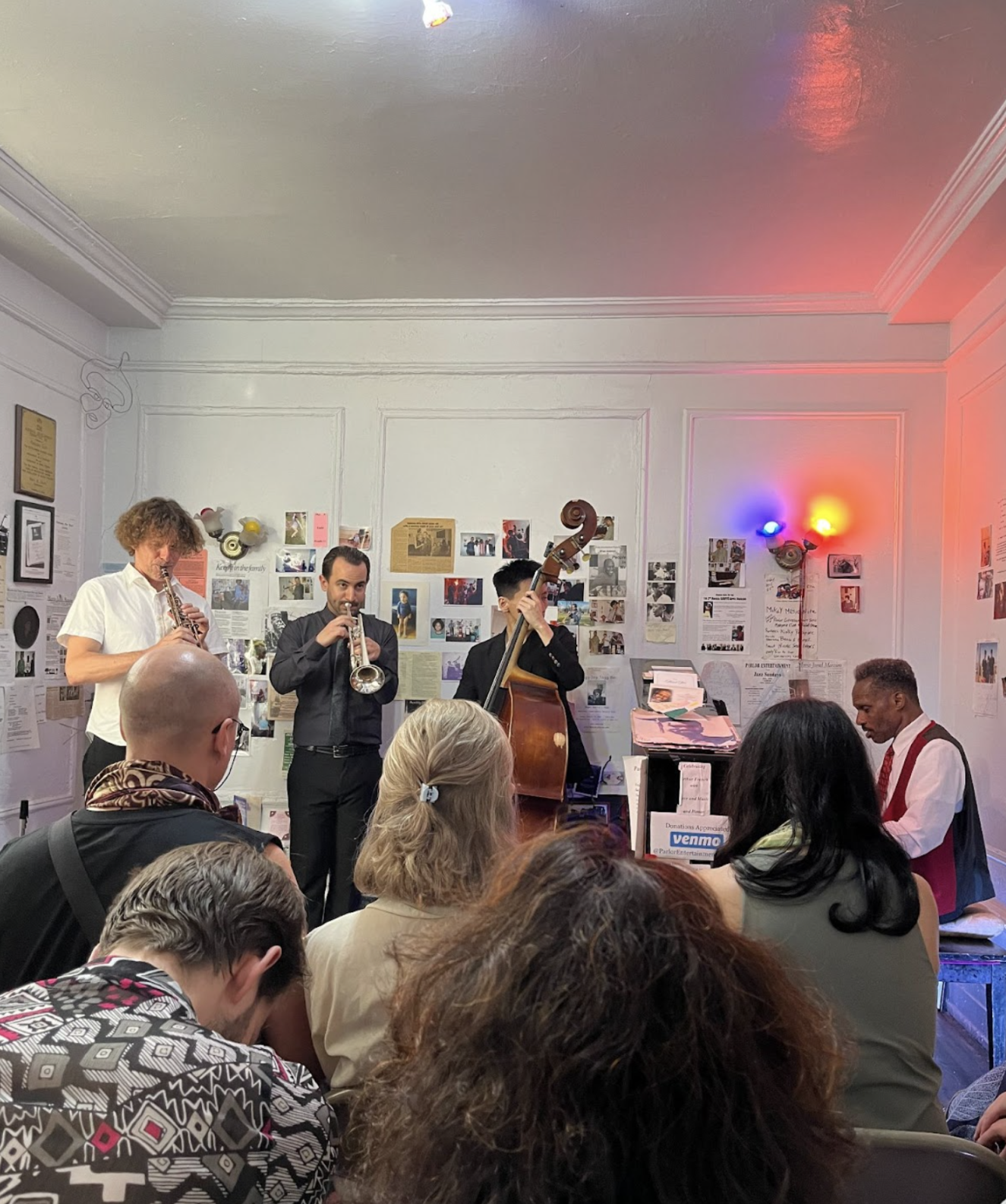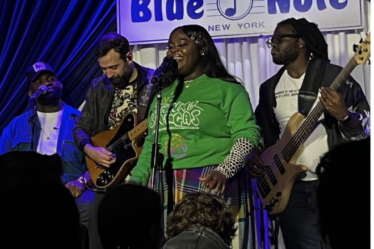
By: Therese Burgo
On a recent trip to the National Jazz Museum in Harlem, I found myself standing in front of an illustrated map of the neighborhood during the Harlem Renaissance. The map listed the names of many prominent musicians from the era in small writing, including where they lived, performed, won awards, and more. At the top of the map, close to Washington Heights, I noticed an illustration of singer Paul Robeson alongside the address 555 Edgecombe Avenue – a location I surprisingly recognized, even as a non-New York native with a poor sense of direction. It only took me one visit to 555 Edgecombe Avenue – or the “triple nickel” as it’s affectionately known – to remember the exact address.
Over the summer, I heard about live jazz hosted in the living room of Marjorie Eliot, a musician and actress based in Harlem. Eliot has been opening her home to the public for free jazz on the weekends for the past 30 years. The experience was one of a kind. Arriving at her building in Harlem, I rode the elevator up to her floor with the bassist who would be performing with her that day. He was very kind, even giving me recommendations for the quickest subway route to Harlem from the Bronx.
I arrived thirty minutes early but still felt lucky to be second in line, as I’ve heard her shows can get crowded early. When her door finally opened at 3:30, the line had grown and stretched down the length of the short hallway, and the sound of elegant piano music welcomed us into her home. The entire show was about two and a half hours and was filled with, of course, jazz, also Stevie Wonder, and a rendition of “This Little Light of Mine” that had the whole room clapping and singing. Complimentary refreshments were also offered during the performance, with Eliot asking for nothing more from her audience than a voluntary donation.
Reflecting on the map I had seen at the Jazz Museum more recently, I did a deep dive into the triple nickel. I learned that 555 Edgecombe Avenue, also known as the Paul Robeson Home, was named after the singer following his death in 1976 and is considered a National History Landmark. The building has also been home to many other famous musicians since the Harlem Renaissance, including Count Basie, who lived there around the same time as Paul Robeson, Andy Kirk, Gil Scott Heron, and Johnny Hodges, the latter who played the saxophone for Duke Ellington.
The triple nickel, a relic of the Harlem Renaissance, has been the home of many musicians and remains so today. Eliot’s humble and intimate living-room concerts transport you back in time and invite you to participate in the legacy of the neighborhood – or more specifically, that of the building. Stepping into the triple nickel is like stepping into history, yet it remains the beloved home of musicians like Eliot herself, who so generously shares her priceless talent and love of music with the community.



